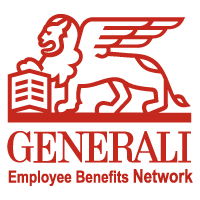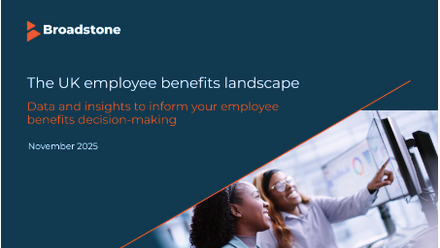A masterclass in networks and multinational pooling

Subscribing to a pooling arrangement gives a single point of access to a network of insurer partners around the world. The network basically shoulders the complexities of pooling: minimising risk and maximising reward for clients.
Of the many strategies used by employers to reduce benefit costs, multinational pooling might just be one of the most ingenious and it’s available to companies with total premiums of just €20,000 (£17,500) per annum and subsidiaries in at least two countries.
What is a network?
The network is the entity that organises, controls, administers and runs the multinational pool on behalf of clients. Networks partner with local insurers in countries around the world to offer clients local knowledge and expertise.
Because pooling is a complex process and requires international expertise, there are only a small number of networks available.
The biggest global pooling providers tend to have the biggest networks. These companies will typically be diversified and offer a range of services in addition to pooling.
The benefits to employers
Network membership brings many benefits: cost efficiencies associated with economies of scale; competitive terms and conditions; pricing and flexibility; access to local products and services; a global overview of all contracts and local insights; up-to-date country and regulatory information; to name but a few. And, what’s more, cashback.
The above benefits come at no extra cost to the employer. In other words, the insurer absorbs any negative balance, while potential dividends will be paid to the client if the overall portfolio balance is positive.
What to watch out for
There’s a number of things employers must consider when selecting a network to provide a pooling arrangement.
- Experience - Some networks have been managing global pools for over half a century and have developed proficiency in managing risk while delivering positive returns.
- Reach - The network of choice must offer local expertise in the countries in which the company operates, or intends to operate.
- Tailoring - Good networks will be able to provide a tailored approach, especially for larger organisations who may need a bespoke approach to stop losses.
- Make-up - The type of pool and the mix of businesses and locations included in the pool can make it less likely to be profitable for certain organisations. Due diligence will help organisations select pools most likely to be profitable, but a good network will be able to advise.
- Information - Do they offer only an annual report or more regular insight? It needs to match the organisation’s requirements. The employer should also meet the people who will be running and distributing the analysis. They’ll need to be able to work closely with them to ensure information is suitable and timely.
- Proactivity- Close management of pools is important to maximise the likelihood of a positive balance at the end of the year. For example, by monitoring and correcting any contracts that are likely to make a loss.
What employee benefits can be included?
Most group insurance products can be included, for example: life assurance, accident cover, medical insurance, disability cover and business travel insurance. Voluntary plans and individual insurances will also be accepted by most pooling networks.
What do the networks get out of it?
In short, they gain potential financial returns. This is achieved through having access to the capital provided by the pooling system. They can leverage this for the duration of the contract. Returns delivered on this capital become part of the end-of-year positive return of the pool, which is delivered back to participants in the form of the dividend.
Operating a pool carries risk, shouldered entirely by the network, and their ability to make a profit comes down to the way they manage the pool. It is therefore in their interests to run pools as efficiently as possible because when participants earn a dividend, the network makes money.
Also, the economy of scale benefits felt by participants in the pool are also enjoyed by the networks themselves. The greater the size of their client base, the greater leverage they have when negotiating preferential rates with local insurers in different countries.
The dividend – how does it work?
A network will produce a profit and loss account between six and nine months after the end of the year showing the income (premiums paid for the local employee benefit risk covers) and outgoings (claims and claims reserves, taxes, administration costs, profit share if applicable, broker commission and risk charges).
Simply put, should the income be higher than the outgoings a dividend will be payable to the head office of the employer.
It should be noted, however, that there are two main types of pooling product typically available through employee benefit networks.A standalone, or self-experienced pool, which is designed for and aimed at larger employers will take into account only the global experience of that employer when producing the profit and loss account.
The level at which a self-experienced pool is available varies amongst the networks but, as a guide, a premium volume of €1m in premium included in the pool allows for a self-experienced pool.
A small group’s pool, or multi-employer pool, combines the policies of several employers in one arrangement. Typical employers utilising these types of arrangements are those with smaller premium volumes or clients who are in the process of implementing larger programmes.
This type of arrangement will generate a dividend if the entire portfolio of employers is positive and will pay out dividends for each country that generates a positive balance.
What level of dividend can an employer expect?
A positive balance and therefore a dividend is created when the number of claims and the total payout from these claims is lower than was assumed in the calculation of the premiums levied. And obviously vice versa for a negative balance.
According to Willis Towers Watson’s (WTW) 2017 multinational pooling and captive research, life insurance contracts were the most consistently profitable, with returns of 19%. Standalone healthcare contracts were consistent deficit producers for multinational pools, with average returns of -6.3%.
There are also geographical variations in pooling performance. WTW found that Sweden produced the largest savings as a percentage of total premium pooled, at 41%, while contracts in Canada were the worst performers, with average returns of 16%.
Are the returns any good?
WTW’s research suggests that top quartile pools can achieve cost savings (in the form of payable dividends) of over 14%. The average return from the multinational pools studied in their research was 6%.
On an individual network level though, the results can be even more impressive. Generali Employee Benefits’ multiemployer pool shows an average payout ratio over the last 5 years of over 20% for each country with a positive experience.
Damian Ross is regional manager – UK, Ireland & Nordics at Generali Employee Benefits Network.
This article was provided by Generali Employee Benefits.
Supplied by REBA Associate Member, Generali Employee Benefits Network
Generali Employee Benefits' solutions are to protect and enhance the wellbeing of their workforce.







